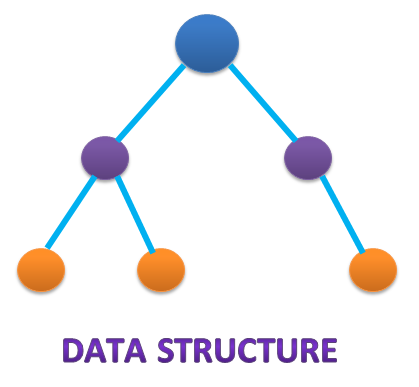Data Structure
The term ‘data‘ means that value or set of values. It specifies either the value of a variable or a constant such as – name of a student, marks of students, roll number of student,, etc. A data item that does not have subordinate data items categorized as an elementary item. It composes of one or more subordinate data items say a Group Item.

A record is a collection of data items, such as name, address, roll number, etc.
A file is a collection of related records. Such as – if there are 60 students in a class, then there are 60 records of the students. All these related records are stored in a file.
The Data Structure is the logical or mathematical arrangement of data in memory. It considers not only the physical layout of the data items in the memory but it is the relationships between the data items and the operations. The Data structure uses in almost every program or software system. Such as Array, Stack, Queue, Linked list, Tree, Graph, Sorting, Searching and Hashing.
